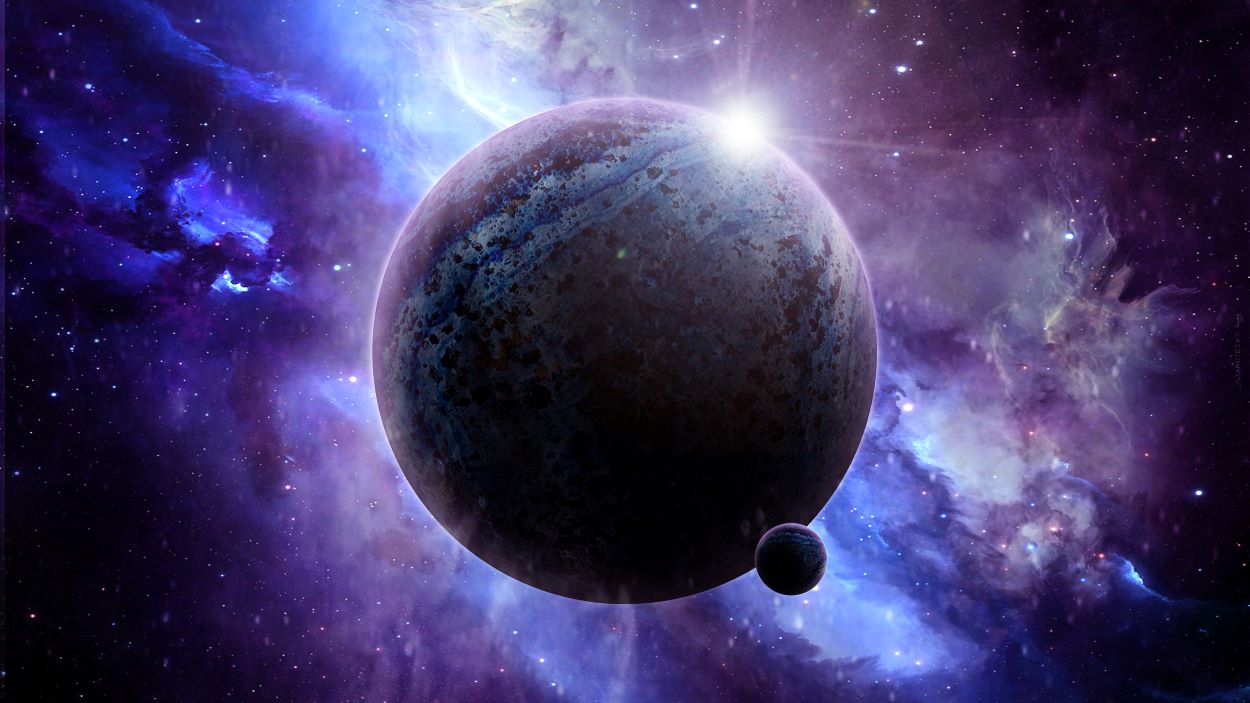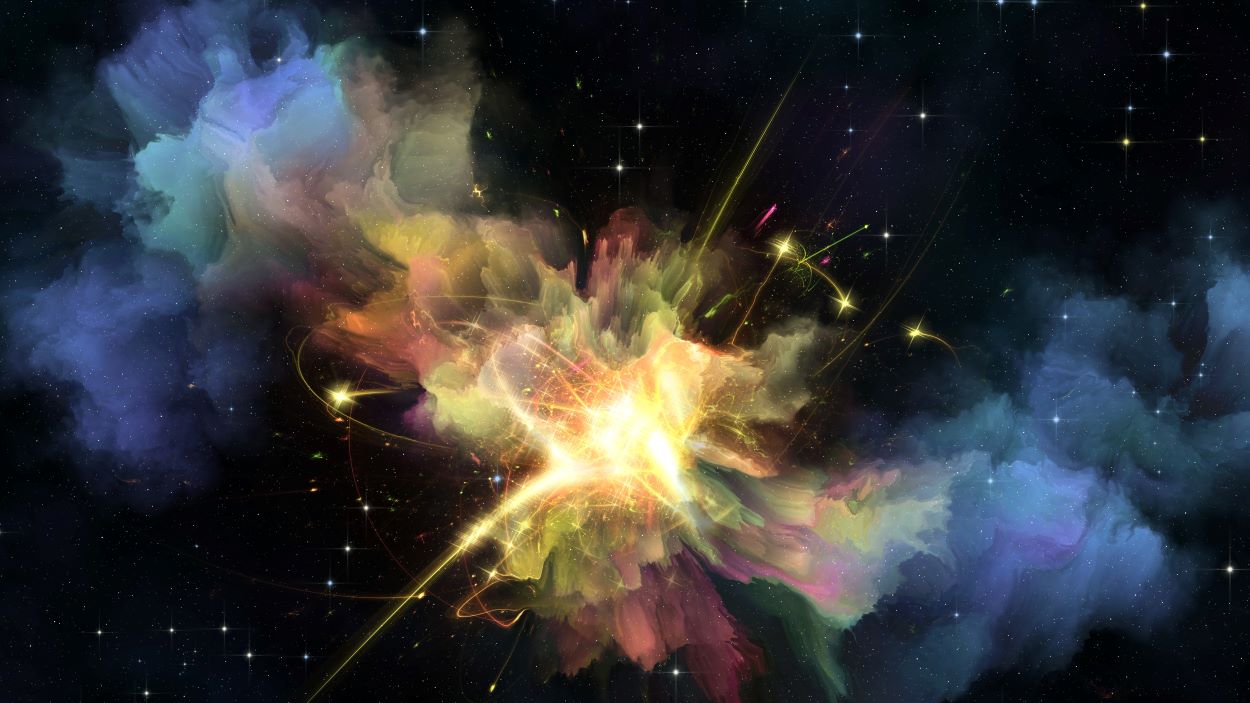
Reality, as Mark Twain has observed, is sometimes stranger than fiction. This is not only true of our tangled human history, with all of its surprising twists and turns. It is also true about something as big and physical as the universe— our cosmic home.
The 20th century was a time for massive discoveries about the universe. For the first time in human existence, science pointed significantly towards the fact that the universe had a beginning. This conclusion was a result of the Big Bang theory, which was based on Albert Einstein’s theory of general relativity. Then, cosmologists discovered that the universe was finely tuned for galaxies, stars, planets and even life itself to exist. The more we learned about the universe, the more special it seemed to be.
Curious cosmic phenomena
But then cosmologists started to notice that some things didn’t seem to be adding up. For example, consider the speed at which stars travel in galaxies. Spiral galaxies are enormous collections of stars speeding around a supermassive black hole located at the galactic centre. As scientists measured the speed of stars travelling out on the edge of a galaxy, they were surprised to discover that these far-flung stars were travelling at pretty much the same speeds as stars that were located much closer to the centre.
This didn’t make sense—these stars shouldn’t be travelling that fast because they were further from the centre. Then, as astronomers studied images they had taken of galaxies, they noticed unusual arcs and rings of light. If there wasn’t anything between the galaxies and our telescopes, these light features shouldn’t be there. Arcs and rings of light would only appear in pictures of galaxies if some intruder was present acting as a giant lens we could not see.

(Credit: Getty Images)
Hints of dark matter
Based on these unexpected observations, scientists like Swedish astronomer Knut Lundmark proposed that there was a lot more matter in the universe than what we could actually see. They called this type of matter “dark matter”.
The matter that we can see is made up of protons, neutrons, electrons and quarks. The reason we can see this type of matter is because it does things to light. In other words, it interacts with light rays. Light bounces off visible matter. This type of matter may also absorb light or even generate its own light. However, dark matter is completely different. It does not do anything directly to light. That’s why we can’t see it. We can only indirectly observe the effects of dark matter.
So, if dark matter is not made up of the “normal stuff” that visible matter is, what are its basic building blocks? Scientists have suggested that it is made up of another type of exotic particle called a WIMP. Perhaps that’s why dark matter is too scared to come out into the light!
Based on their calculations, scientists have estimated that 27 per cent of the universe is made up of dark matter, which is about a quarter of the universe. That doesn’t sound like a significant amount, except for the reality that, according to their calculations, only about 5 per cent of the universe is visible matter. There is something else at work out there.
Hints of dark energy
As cosmologists studied the universe’s expansion predicted by the Big Bang theory, they expected that the pull of gravity would start slowing the expansion of the universe down. This could mean that the universe could ultimately collapse in on itself. However, what they discovered was the opposite. Instead of slowing down, the expansion of the universe appears to be accelerating. To explain this unusual finding, they proposed that something else existed in the universe which they called “dark energy”. Their calculations show that dark energy makes up 68 per cent of the total energy in the universe.
It’s relatively easy to give “dark energy” a name. The challenge is to figure out what dark energy actually is. Some scientists have suggested that dark energy is sort of like a fluid that fills the entire universe. This fluid has been called quintessence.
Together with dark matter, this means that we cannot see what 95 per cent of the universe is made up of. To think that we have yet to really observe 95 per cent of the building blocks of our cosmic home is quite humbling and thrilling at the same time.

(Credit: Getty Images)
Shadowy hypotheses
There is one significant challenge, though. While popular media channels like National Geographic claim that scientists are confident that dark matter and dark energy exist, a careful review of the scientific literature shows that scientists are not quite as presumptuous and conclusive. They recognise that dark matter and dark energy are just proposals to explain things we observe. They acknowledge that dark matter and dark energy may not actually exist. Some scientists have written academic papers explaining why they don’t think that dark matter and dark energy need to be invoked to explain why the Big Bang theory does not seem to predict everything we observe, including the universe’s expansion.
For example, the strange things that we observe, like stars travelling too fast around the edge of a spiral galaxy, may be because we don’t fully understand the nature of gravity and its effects. If this was the case, though, it would significantly modify or even replace Einstein’s theory of general relativity. This, in turn, would mean that the Big Bang theory is possibly not the correct model to understand the universe’s origins. If the Big Bang were not true, then the universe itself may be much younger than 13.8 billion years old. As all cosmologists know, there are many other cosmological models that can fit the cosmological data that we observe.
You might be wondering how we can see stars that are far away, if the universe was much younger than 13.8 billion years old. This is called the starlight travel-time problem. What you may not be aware of, though, is that the Big Bang theory has exactly the same problem—it is called the horizon problem. Scientists have proposed several ways to solve the horizon problem for the Big Bang theory, such as cosmic inflation or a variable speed of light. If these solutions work for the Big Bang theory, they will work just as well for a younger universe.
Insights from dark matter and dark energy
There are some important lessons that we can learn from dark matter and dark energy, even if they do not actually exist. What they reveal is that there may be things in the universe that we are not aware of. Also, there may be things causing these physical phenomena which we cannot see.
This includes God. Just because we cannot see Him does not mean that He does not exist. The beginning of the universe and its finetuning point to the fact that He exists. Also, if we turn to history itself, we find evidence of God’s supernatural power and nature in the life, death and resurrection of Jesus Christ.
It is thrilling to explore whether dark matter and dark energy exist, even if we cannot personally observe them. It is even more thrilling to explore whether God exists. To think that He might care about us so much that He would come and live with us in the Person of Jesus is breathtaking. Why not take the amazing opportunity to carefully explore whether He exists and to get to know Him personally?
Dr Sven Östring is the director of ministry and strategy at the South Pacific Division of Seventh-day Adventists









